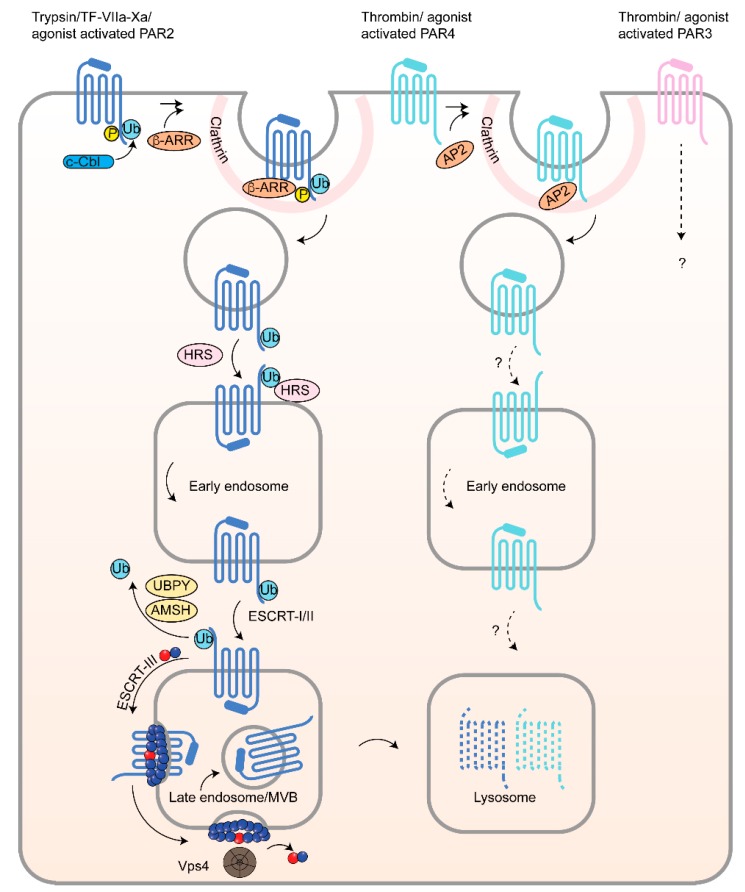Figure 5.
Endocytic trafficking of PAR2, PAR3 and PAR4. Agonist-activation of PAR2 can occur by trypsin, tissue factor (TF)-VIIa-Xa or peptide agonist SLIGKV and induces phosphorylation and ubiquitination followed by receptor internalization, which is mediated by β-arrestins (β-ARR) through a clathrin-dependent pathway. Ubiquitination of activated PAR2 by the E3 ubiquitin ligase c-Cbl, functions primarily in PAR2 endosomal-lysosomal trafficking. Ubiquitinated PAR2 is recognized by HRS at early endosomes and required for lysosomal sorting, after deubiquitination mediated by the AMSH and UBPY deubiquitinating enzymes that enable sorting of PAR2 to MVBs by the ESCRT-III/Vps4 machinery and ultimately degradation. Agonist-activation of PAR4 by thrombin or AYPGKF induces internalization mediated by AP-2 and occurs through a clathrin-dependent pathway similar to PAR1. AP-2 binds activated PAR4 by recognizing a tyrosine-based sorting motif present in the third intracellular loop of the receptor. Internalized PAR4 is then sorted to endosomes and lysosomes for degradation. The endocytic adaptor proteins that facilitate PAR4 endosomal-lysosomal trafficking are unknown. The mechanisms that control thrombin-activated PAR3 internalization and trafficking to lysosomes is not known.

